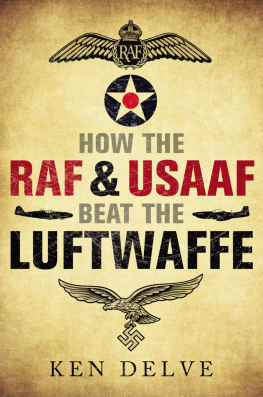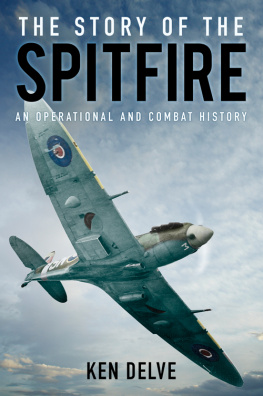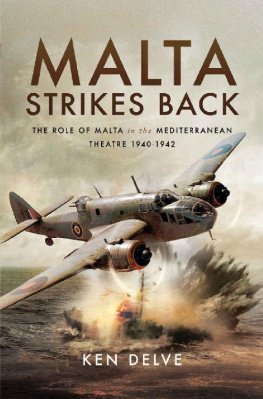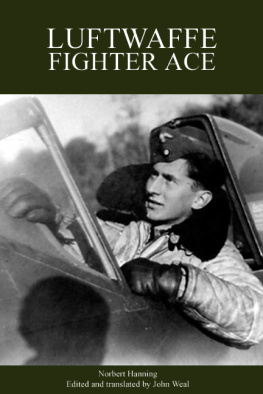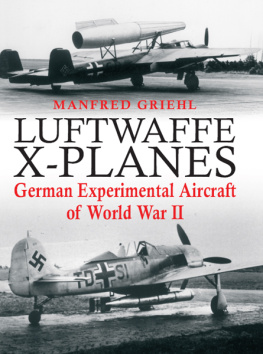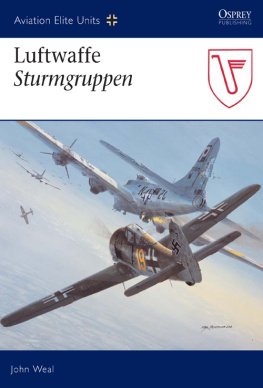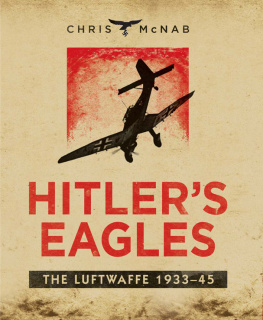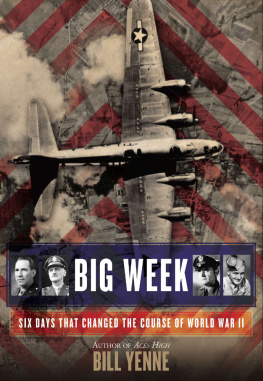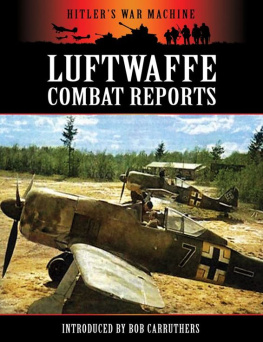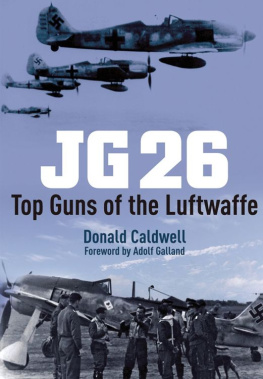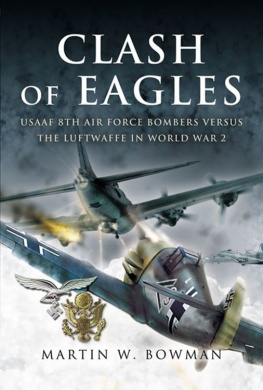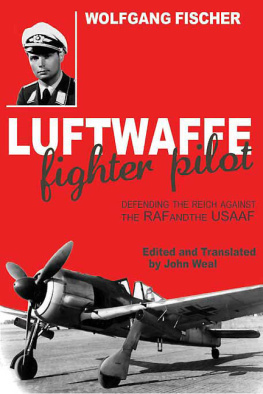HOW THE RAF & USAAF BEAT THE LUFTWAFFE
HOW THE RAF & USAAF BEAT THE LUFTWAFFE
KEN DELVE
How the RAF Beat the Luftwaffe
First published in 2021 by
Greenhill Books,
c/o Pen & Sword Books Ltd,
47 Church Street, Barnsley,
S. Yorkshire, S70 2AS
www.greenhillbooks.com
ISBN: 9781784383824
ePUB ISBN: 9781784383831
Mobi ISBN: 9781784383848
All rights reserved.
Ken Delve, 2021
The right of Ken Delve to be identified as author of this work has been asserted in accordance with Section 77 of the Copyrights Designs and Patents Act 1988.
CIP data records for this title are available from the British Library
Frontispiece: The tail turret of an Avro Manchester of 207 Squadron; the rear-gunner, with his four machine-guns, was a critical part of the bombers defence against night fighters.
This book is dedicated to all those who served in the Allied and German air forces in World War Two.
Contents
List of Plates
Preface
Acknowledgements
Chapter 1 Gallands View
Chapter 2 Readiness? The Period to May 1940
Chapter 3 France and the Battle of Britain
Chapter 4 Luftwaffe Night Raids and V-weapons
Chapter 5 Bomber Commands Night Offensive
Chapter 6 Daylight Offensive: Destroying the Luftwaffe
Plates
1.Hurricane of 73 Squadron, France, winter 193940; Fighter Command operations room; Spitfire of 92 Squadron at Duxford, May 1940.
2.Adolph Sailor Malan of 74 Squadron; Luftwaffe intelligence map of RAF Scampton; cartoon from a Fighter Command training pamphlet.
3.Spitfires of 616 Squadron approaching Rochford, 1940; re-arming a Hurricane.
4.Czech pilot of Fighter Command; Air Marshal Dowding, head of Fighter Command in 1940; Douglas Bader with pilots of 616 Squadron; Hermann Gring.
5.Messerschmitt Bf 109 fighter; Bristol Beaufighter night fighter; Pilots of 80 Squadron pose with a Spitfire at West Malling, July 1944.
6.Aircrew in the early stages of training; Whitley crew of 58 Squadron, Linton-on-Ouse 1940; Wellington crew of 149 Squadron.
7.Wellington crews at Marham, August 1940 * ; Handley Page Halifax heavy bomber in flight; Egmont Lippe-Weissenfeld Luftwaffe night-fighter ace.
8.The Junkers factory at Leipzig after the Bomber Command attack of 3/4 December 1943; Gp Capt John Searby, one of the first Master Bombers, seen at Wyton in August 1943.
9.Air Marshal Arthur Harris, head of Bomber Command; RAF leaders Coningham, Broadhurst and Tedder.
10.Drawing of a shot-down Lancaster by one of its crew; target photo from an attack on the Bec dAmbes oil depot, France, 4 August 1944.
11.B-24 production line at Fort Worth; B-17 formation in flight.
12.A B-17 during an attack on the Focke-Wulf factory at Marienburg; B-24s of the 44th BG.
13.Flight and groundcrew personnel of B-17 Thundermug of the 305th Bomb Group, June 1944; B-17 undergoing maintenance; flak hit on a B-24.
14.Fighter ace Don Gabreski poses with his groundcrew and his P-47 Thunderbolt; Lt Stapp and Lt Manahan of the 305th FS, 353rd FG, with a P-51 Mustang; General Bill Kepner, head of VIII Fighter Command during 19434.
15.Adolf Galland, fighter ace in 1940 and General of Fighters later in the war; Me 262 jet fighter.
16.A heavily attacked oil facility; a Fw 190 shot down by an American fighter.
All photographs in Plates 110 come from the authors collection, except Plate 7 * , which is courtesy of the RAF Marham Aviation Heritage Centre; all photographs in Plates 1116 are from the US National Archives.
Preface
How did the RAF beat the Luftwaffe? This is a good question and one that can trigger a great deal of debate, some of it partisan. The massive participation of the Americans from early 1943 is part of the story but some would argue that by managing not to lose, the RAF enabled the eventual victory. This present study does not aim to be definitive; for one thing, I do not believe there is ever such a book, although there are authors with a definite ego and publishers with an eye to marketing. This study looks at the main campaigns in which the RAF, and later the Western Allies, faced the Luftwaffe. It therefore ignores much of the war, even though, as a global war, every part of the conflict had influence on other parts, such as resource use, morale impact, and so on.
The period 1940 to 1942 could be defined as how the RAF beat the Luftwaffe and the period 1943 to 1945 as how the Anglo-American air forces destroyed the Luftwaffe. This split will no doubt be disputed and argued, but in air power terms and its ability to influence the overall progress of the war, the Luftwaffe was, by the later months of 1942 no longer a decisive strategic, or even tactical weapon, despite its ability to deliver sharp defeats when poor tactics were used by its opponents, and on the Eastern Front where the Soviets never achieved a significant degree of air superiority. The Luftwaffe was remarkably resilient, but it was on a continual slide to ultimate destruction. The main areas in which failure could be measured were:
Defective strategic planning from the inception of the Luftwaffe; a tactical air arm wedded to the airland concept, which by being highly successful in the first eighteen months of the war meant the German leadership failed to see the seeds of ultimate failure;
Failure to provide decisive result over Britain in 1940 and over the Mediterranean/Desert in 19412;
Failure to defend the Reich and the occupied countries against the RAF and, later, combined Allied bomber offensive;
Trying to do too much with too little the multi-front war.
There were numerous aspects to these failures, and this study looks at many of these, from equipment (not just aircraft), to tactics, leadership (political and military), logistics, morale, and others, which are discussed in each chapter. In broad terms the study is limited to the fighter and bomber roles, as these had the most impact on the point in question. This is not intended in any way to minimise the role of Allied air power in the maritime war, airland support, transport, and all the other roles and theatres, such as the Far East, where RAF and Allied personnel fought long and bitter conflicts. Thus, this study focuses on the campaigns in the Western European Theatre of Operations, as this was the operational area in which the decisive elements took place.
It is obvious that the Russian war provided the Germans with a range of strategic problems from its start in 1941, increasingly so from early 1943, which impacted their air capability elsewhere; for example, the diversion of air assets to the Eastern Front. There are many who believe that US air power and tactics were decisive in the final defeat of the Luftwaffe. There is a large element of truth here regarding the actual destruction of the Luftwaffe, but that part of the story is only really true for the last year or so of the war. The previous five years of war had been ones of avoiding defeat, followed by building the capability that provided the foundations for the defeat and then destruction of the Luftwaffe. Would Bomber Command have been able to continue the night war if the day offensive had not been draining fighter assets (aircraft and crews)? If the night offensive had not been delivering increasingly powerful blows would the greater availability of fighter and flak assets have impacted the day offensive? If the German political and military leadership had not based its air strategy on the concept of airland support to conquer territory would better air-defence aircraft and systems have been in place earlier? All these and more are interrelated and taken together led to the defeat and destruction of the much-vaunted Luftwaffe.

